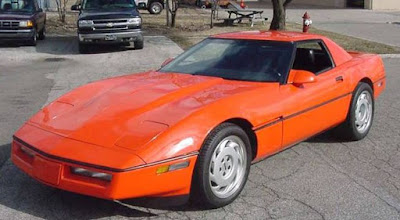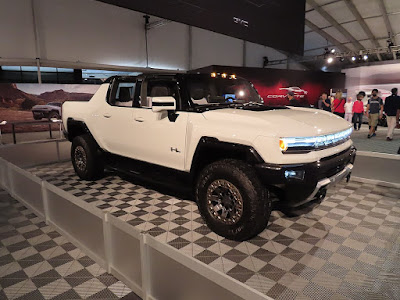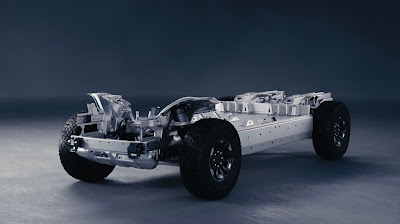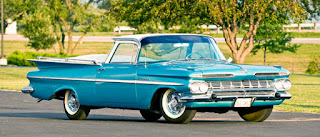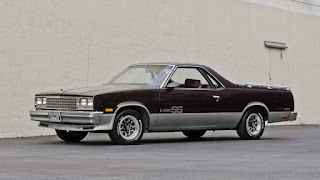Zero Emissions 2022 GMC Hummer EV
Let's go back and visit a little history from the Hummer. Most people know about the Hummer because of its odd shape and style making it hard to blend in with other Trucks and SUVs on the market.
In 1998, General Motors bought the Humvee brand from AM General, who started marketing the Humvee in 1992. Unfortunately, the Humvee wasn't very marketable and that's what GM was going to do with it - change its name, change its style, and make it a marketable automobile.
General Motors came out with a Hummer H1, H2, and an H3 and seen some sufficient success in certain areas of the US. A lot of that success came from its pop-culture status. The Hummer's name was used in many hip-hop and rap songs as well as made appearances in many of those hip-hop and rap videos.
Through General Motors' rough patch of bankruptcy and bailouts, the Hummer nameplate took some right turns, left turns, and eventually ended up with GMC where the idea for the "GMC Hummer EV" was born back in 2020 to be revealed as a 2022 Hummer.
Hummer Trim Levels
The marketing plan GMC has for the Hummer is a little unorthodox. In 2022, they will release the most expensive version of the Hummer, the Edition 1. This trim level has all the bells and whistles and will cost you about $112,595.
The rest of the Hummers will come out in 2023-24 ranging in price from $80,000 - $100,000.
2022 GMC Hummer Performance
We'll stick to the Edition 1 since that is the first one that will be hitting the market.
The Horsepower rating for the Hummer truck is 1,000
The Horsepower rating for the Hummer SUV is 830
The Torque for both the truck and the SUV is an estimated 11,500 ft.-lb.
Hummer Features You Won't Find on Other Trucks and SUVs
Hummer Crabwalk
This function can help you get around obstacles, make parking a little easier, and pop a few bystander's eyeballs out of their sockets. Like with most functions in the highly optioned Hummer, with a push of a button, you can activate this clever option.
Hummer Extract Mode
This mode is also unique to any other truck or SUV on the market. The Hummer can use its air-ride suspension to lift the Hummer up six inches in an attempt to clear dangerous obstacles or to get you out of obstacles you have come to get stuck in.
These are amazing features for someone who likes to take on off-road challenges that are out of this world fun, complicated, and dangerous.
Full Underbody Armor
Skid Plates and Rock Slides are put in place to help the Hummer's vital parts under the vehicle stay safe when you are traveling over the rough terrain and in the watery and muddy pathways. In fact, you can submerge your Hummer in as much as 32" of water without having one performance or flooding problem.
13.4-Inch Touchscreen
Outboard Cameras for Interior Awareness
The Hummer truck has 18 outboard cameras and the SUV has 17. Both Hummers have two water-proof underbody front and rear-facing cameras with self-washing systems with replaceable lens protectors.
Hummer's 35-inch Tires
The 35-inch stock Goodyear Wrangler Territory tires are quite big, but there is an ability to upgrade from there and go up to a 37-inch tire with no aftermarket upgrades needed.
Adaptive Ride Suspension
The 2022 Hummer EV Adaptive Ride Control Damping suspension adjust seamlessly off-road based on shock-travel. The ride height can be adjusted 2 inches lower for better aerodynamics and 2 inches higher for better ride height.
There is not much this suspension can't handle - it can put you in the comfort zone when driving around the city and can put you in a position to take on some of the most toughest terrains the off-road can throw at you.
Changing Lanes with No Hands
That's right, the time has come. When we say this Hummer can do it all, we mean it. There are over 200,000 miles of compatible roads that will work with your Hummer and can do lane changing for you.
I've always believed if you can't change lanes on your own or don't want to put your hands on the steering wheel, you really shouldn't be in the driver's seat, but to each his own.
Other Cool 2022 Hummer EV Features
The SUV will receive a power swing gate in the rear, fold-down flat rear seats for plenty of cargo room, plus cargo room under the floor in the rear cargo space. The multi-pro tailgate will come with the truck version for easy in and out access to the truck bed.
The SUV will come with removable transparent sky panels, which can be easily and safely stored in the front storage space of the Hummer.
The 800V DC fast charging Ultium batteries can charge up to 100 miles in 10 minutes. Real-world MPG is probably somewhere around 75 miles per gallon. That is actually an outstanding number when you consider the weight and the performance this Hummer has.
Unfortunately, if you don't have a DC charging station nearby, you can charge your Hummer at home with an adaptor, but charging times are considerably slower.
The Best EV Truck and SUV Ever
If you have a need for being the King of the Road and King of the off-road, then these GMC Hummer EV trucks and SUVs are right up your alley. They have everything and more that other trucks and SUVs on the market just can't compete with.
The Hummers are pretty expensive, but think of how much gas money you will be saving as opposed to if you were driving a gas-guzzling Hummer.

